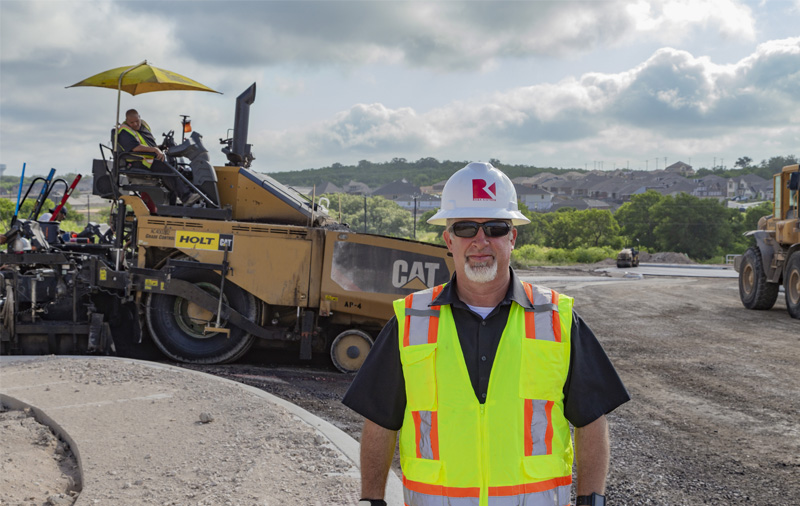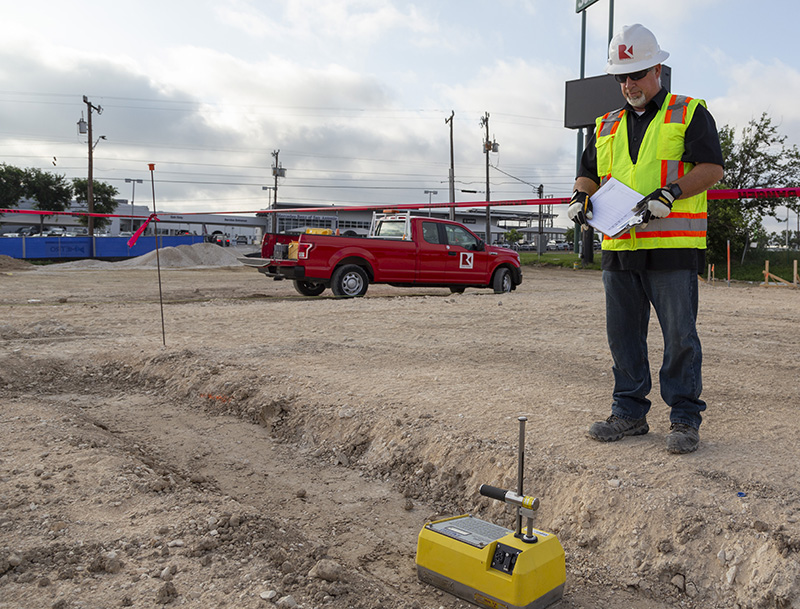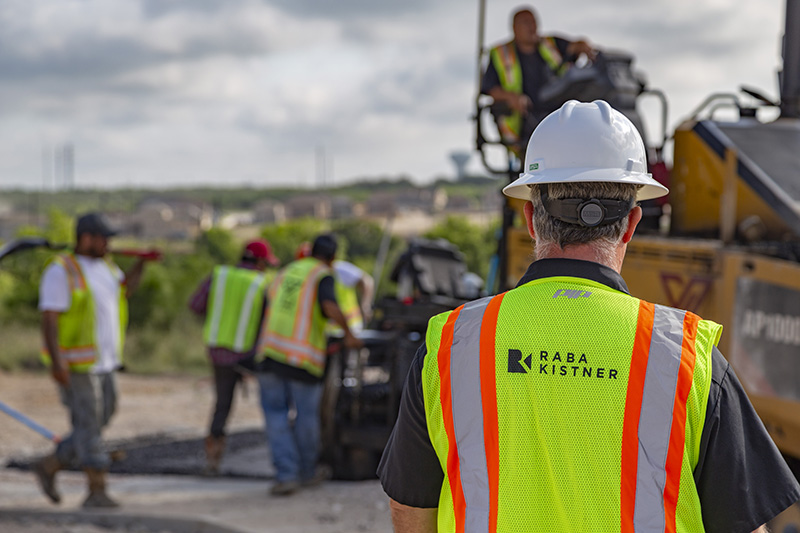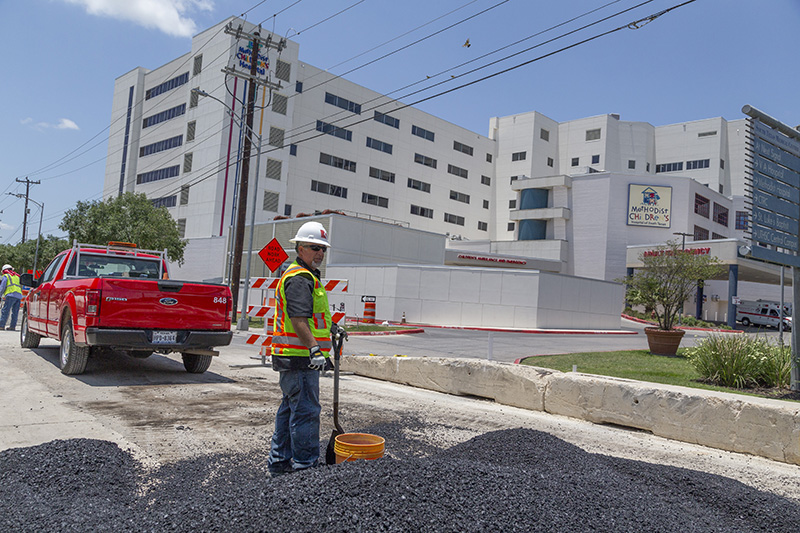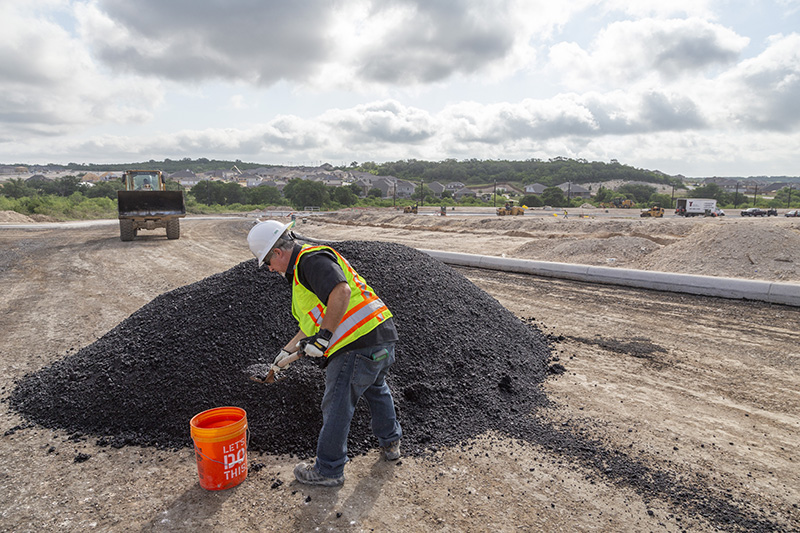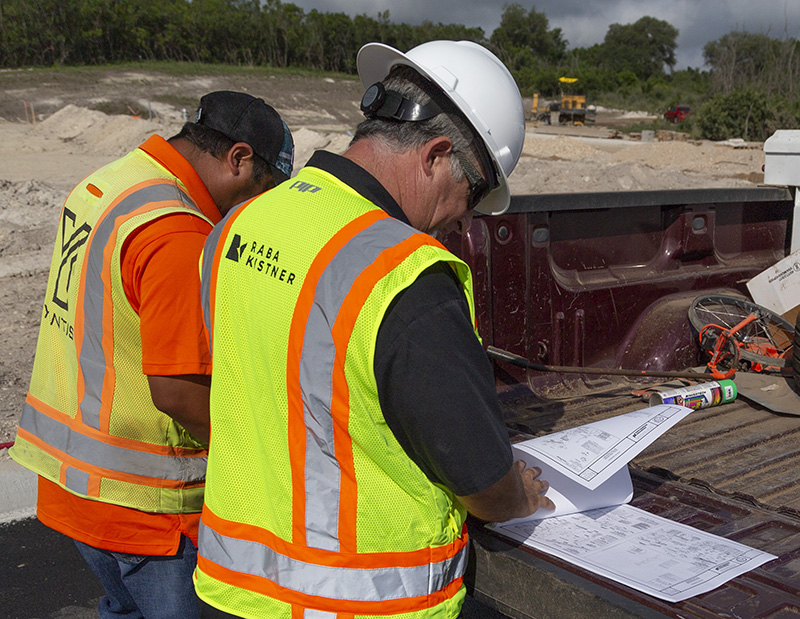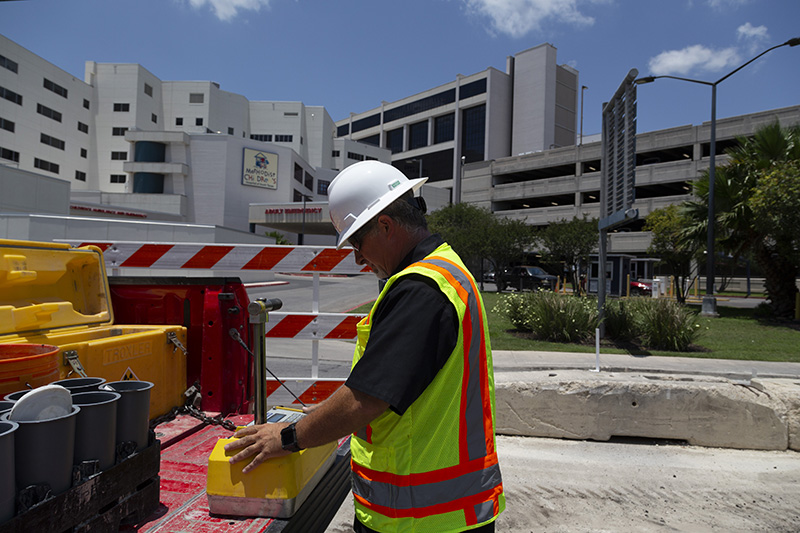We spent some time with Jeff Aderholdt, Construction Materials Engineering and Testing (CoMET) Technician, to learn more about his role and what it's like to work for Raba Kistner.
Can you briefly share a summary about what projects you worked on today, while we spent time with you?
The first project that I took you to involved nuclear density moisture testing on soil layers in trenches for plumbing at a new facility being built for North Park Subaru. In this case, the construction company unloaded and spread soil in eight inch loose lifts in the trench and compacted it. My role was to come to the site and test each layer for density and moisture, using a nuclear density gauge. This process was repeated several times with various depths of soil.
The next project that we visited involved three related clients as part of the Ladera Hills subdivision. I, again, provided nuclear density moisture testing for compacted soil areas that will become the base layers for a residential road and parking lot. I additionally provided nuclear density moisture testing, temperature inspections and asphalt sampling for new constructed private roads within the subdivision. I transported the asphalt sample collected for testing to our lab, located at our San Antonio corporate office.
The third project that we visited today required that I evaluate asphalt compaction on a City of San Antonio street located in front of the Methodist Children’s hospital. This process involved providing nuclear density testing, and collecting an asphalt sample to be evaluated at our San Antonio lab.
On an average 12 hour day, how many projects do you typically work on?
Depending on what projects we are involved with in a given week, I can be working on 5 to 10 different projects a day. Our Project Managers and Dispatch work together really well to ensure that I stay busy and can meet the testing and supervisory requirements of many clients each day.
On average, how many miles do you drive each day to work on your project sites?
On a busy day I’ll drive 150-200 miles. Raba Kistner provides me with a work truck and pays all necessary expenses for me to do my job.
Why is soil and asphalt compaction important?
Correct compaction of soil and asphalt helps ensure that each of those materials will meet the strength requirements determined by regulatory codes, the client, engineers, architects and construction companies. One of the reasons that foundations can fail is that the soil beneath them was not properly compacted and sealed, allowing water to seep through the foundation and cause structural damage. Too much moisture in the soil, or too little moisture, can exceed design tolerances and cause foundations and roads to crack.
Road design and construction also depends on properly compacted soils and asphalt to handle a predicted amount of traffic. Different types and layer depths of soils and asphalts are used to handle certain types and levels of vehicle traffic, and the road building process and usage requirements must be evaluated before, during, and after construction.
What is the process like to get an asphalt sample?
For non-Department of Transportation (TxDOT) or City projects, I’ll dig into an asphalt pile set aside for sampling, and collect a representative sample in a bucket to be tested at our lab in our San Antonio office. I’ll usually take these samples on a daily basis, depending on the type of asphalt and the project type. If it’s a city facility or city street project, we grab asphalt being used on those projects directly from the plant that produces it, which pulls a sample for us on a daily basis.
How do you determine how frequently you collect samples within a project?
The requirements for sampling frequency can either be found in the project specifications that include TxDOT requirements or by City regulations. Density testing frequency is given by project and is usually determined by square footage, which in turn is determined by the length and width of a parking lot, or the lane width and station number along a roadway. So in a roadway that is a consistent width, I’ll test every so many centerline feet of roadway. More heavily trafficked roads, like highways, require more aggressive testing than those for a subdivision, which will have lighter traffic.
What is the work dynamic like at your job?
We go out and do our tests in the field alone, unless a project requires us to have two people. Sometimes we will encounter other Raba Kistner employees who are working on a client’s site full time in another capacity. After working on job site and performing tests, I’ll move on to another client’s job site and then eventually return to our San Antonio office to turn in asphalt and concrete samples for testing.
You’ve got to stay focused. You have to take notes and pictures and remember procedures. Project specifications. and what contractors are working on-site. will change on a day-to-day basis and you have to be aware of them and know how their work will affect your testing requirements. As a Technician, working on different projects with different clients every day. Keeping my reports and paperwork up to date is critical.
It’s really important to have a good attitude and like what you do. Many of our employees have worked with Raba Kistner for over 15 to 20 years and they’re really good at what they do. Raba Kistner empowers their employees to reach their full potential. I’m really excited to be a valued member of the team.
What is the difference between geotechnical engineering and construction engineering and materials testing?
Geotechnical Technicians go out before construction begins and take samples from the original material in the ground before we go into a project. They share that information with Project Engineers that can take that data to determine pavement and foundation design based on the soil and environmental conditions. Construction engineering and materials testing occurs during the actual project build to help ensure materials are meeting regulatory and project design requirements.
Who are your clients generally?
Our diverse range of clients typically includes the following market sectors: commercial, municipal/government, multi-family apartments and single family housing.
How did you get started in this industry?
I did hazmat work before this, and when I went through a temp agency to get a hazmat job, they paired me with Raba Kistner. Before that, I worked in the construction field as labor. When I came to Raba Kistner, this company gave me training and equipment, and I picked it up right away. When I first joined, It didn't take very long for me to appreciate the work that Raba Kistner was doing, the company culture, and how friendly and dedicated the other employees were. I stayed with Raba Kistner over the past 13 years because of the great learning opportunities and the constant opportunity to make a difference for our clients and the community.
Why do you like what you do?
I like that I’m working outdoors. I like the work. I get to work with a variety of people across many companies, job roles, and backgrounds. I always stay busy, and have opportunities to learn. I get to participate in helping support the construction of buildings and roads across the city. As I drive across town with family and friends, I have the opportunity to share how our work is supporting companies and the city of San Antonio across various projects.
I use Raba Kistner’s electronic engineering data management system, called RKIS, to upload my calculations and project data with a company-issued iPad while I'm working at a client's site. This system allows our clients and Project Managers within Raba Kistner to see my progress immediately after I perform a test and input the data. It also helps our department schedule work for all field employees in real time, keep us moving between projects quickly as project objectives are met. Nearly eliminating paper receipts and reports has been really helpful to provide quick feedback and maximize my productivity.
What have you been learning about from recent projects?
Understanding how things are done most efficiently. When I first started here, I learned how to take concrete samples. From there, I was constantly learning, for example: learning how to perform rebar inspections, soils and asphalt testing. With the large variety of projects that I work on, learning how to work with different construction companies and architects has been really important. There are many processes involved in the design and construction of buildings that can vary between clients and contractors. I’ve been able to see how schools are built from the ground up and support that process through testing.
How do you help ensure your safety while working on project sites?
Safety is our highest priority on a project. We’re trained to be aware of our surroundings. Large construction sites can be very busy, and job site hazards can rapidly change .Since I spend most of my time outside on job sites, I have to be aware of heat stress and staying properly hydrated, since it can get very hot on some of these projects and it’s possible to get dehydrated quickly. I must stay aware of what’s involved with a project, and what other workers are doing, especially when they operate heavy equipment or are working on building projects near or above me.
What kind of ongoing training does Raba Kistner provide to you to help you stay safe on the job?
We participate in constantly updated training modules on a rotating basis. Raba Kistner provides computerized training, along with almost daily updates from Safety Management. Even the small things that we encounter are important. They provided us with driving safety training, which has been very helpful since I can drive 500 miles or more per week to get to and from project sites to perform my work. It’s important not to get in a big hurry when driving and drive defensively. Staying safe is the most important aspect of every project for me, and Raba Kistner continually provides employees with meaningful training and the right culture to help us work safely.
Interested in an exciting and rewarding career? See all of our career opportunities here.













